Georgina Campbell's Book Reviews
An unusual crop of food and drink books has landed on my desk this autumn - less of the bumper cookbooks from TV shows and celebrity chefs, more of the reflective and genuinely interesting books that are a pleasure to read and add to our knowledge, often by reintroducing us to forgotten foods or lost techniques…Perfect gift material for the discerning food lover in your life, in fact - which may well be yourself.
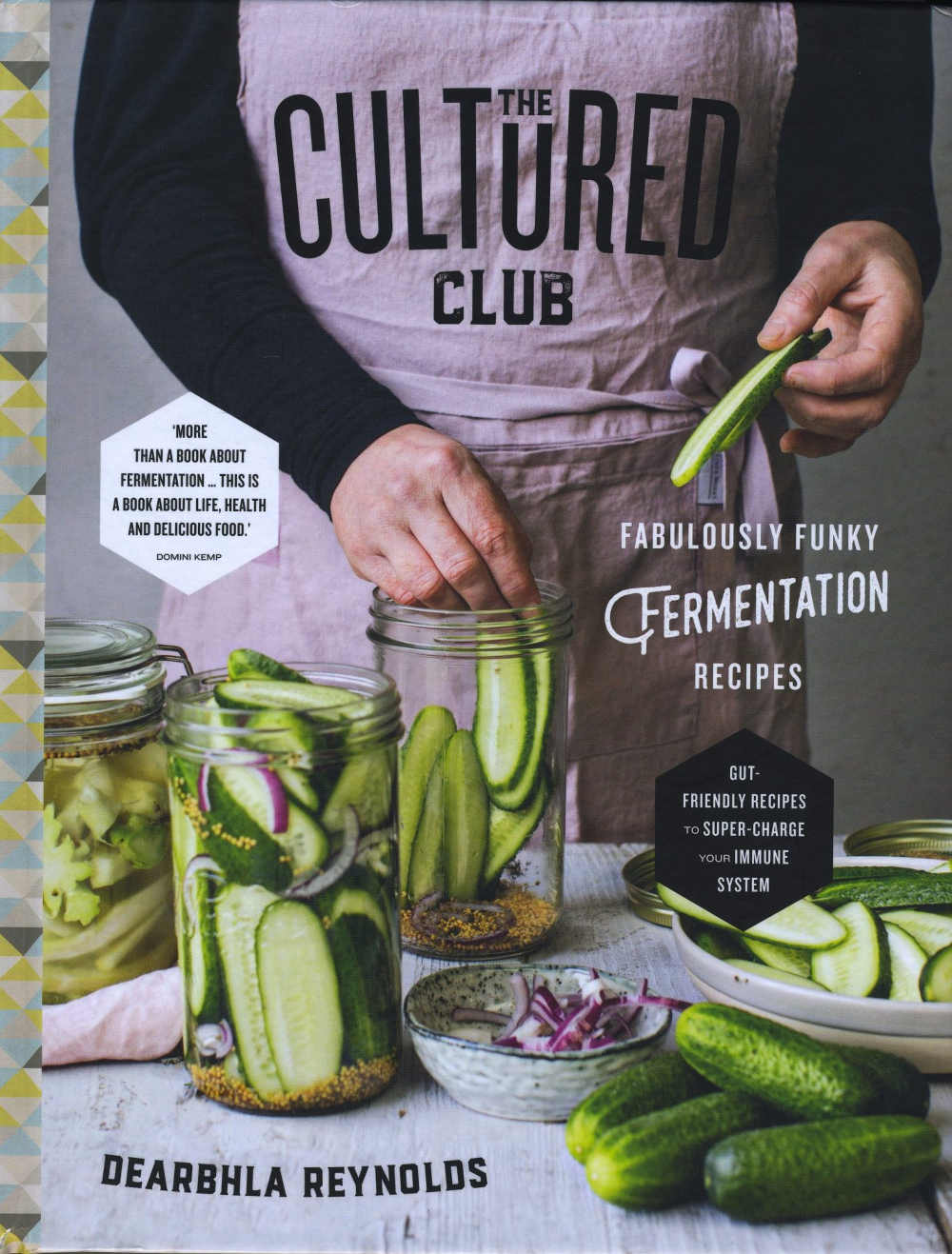 THE CULTURED CLUB, Fabulously Funky Fermentation Recipes by Dearbhla Reynolds, photography Joanne Murphy. (Gill Books, hardback; 342pp; €27.99/£24.99).
THE CULTURED CLUB, Fabulously Funky Fermentation Recipes by Dearbhla Reynolds, photography Joanne Murphy. (Gill Books, hardback; 342pp; €27.99/£24.99).
Very much with the zeitgeist, this impressive and handsomely produced book is destined to be a huge success. Although a first book, fermentation expert Dearbhla Reynolds - daughter of a pharmacist and a home economics teacher - hit the high spots early when she formed a collaboration with Belfast’s hottest restaurant, OX.
All the buzzword foods and drinks - kimchi, sauerkraut, fermented salsa, kombuchas and kefir - are here, but there’s not a bandwagon in sight. A serious book in many ways - the history and ‘gut health’ benefits of the world’s oldest method of food preservation are explained, together with ‘the art of fermentation and how to turn simple foods into super food’ - but with plenty of fun to be had along the way.
SAMPLE RECIPE: Dilly Carrots Two Ways
In her introduction to this ‘fresh and fragrant’ recipe Dearbhla Reynolds says reminds us that all root veg ‘will work wonderfully well as a fermented food’.
#1 Dilly Carrots
Makes 1x1-litre jar
I kg carrots - the bigger, the better for processing
1 bunch of fresh dill
I tbsp sea salt
Process the carrots however you like, using a food processor, mandolin, spiraliser or grater. Remove the stems from the dill and chop the fronds finely for an even mix.
Place the carrots and dill in a bowl. Sprinkle over the sea salt and massage it through the vegetables until they feel wet.
Pack the mixture into a clean 1-litre flip-top jar, pressing each handful down tightly to ensure no air is trapped. Pack the jar tightly, leaving 2.5cm headspace at the top of the jar. Make sure the
carrots and dill are completely submerged under the liquid that has been released.
Close the lid and allow to ferment for five days at room temperature, then store the jar in the fridge for up to six months. Carrots are best enjoyed within this time, as they tend to get mushy after six months.
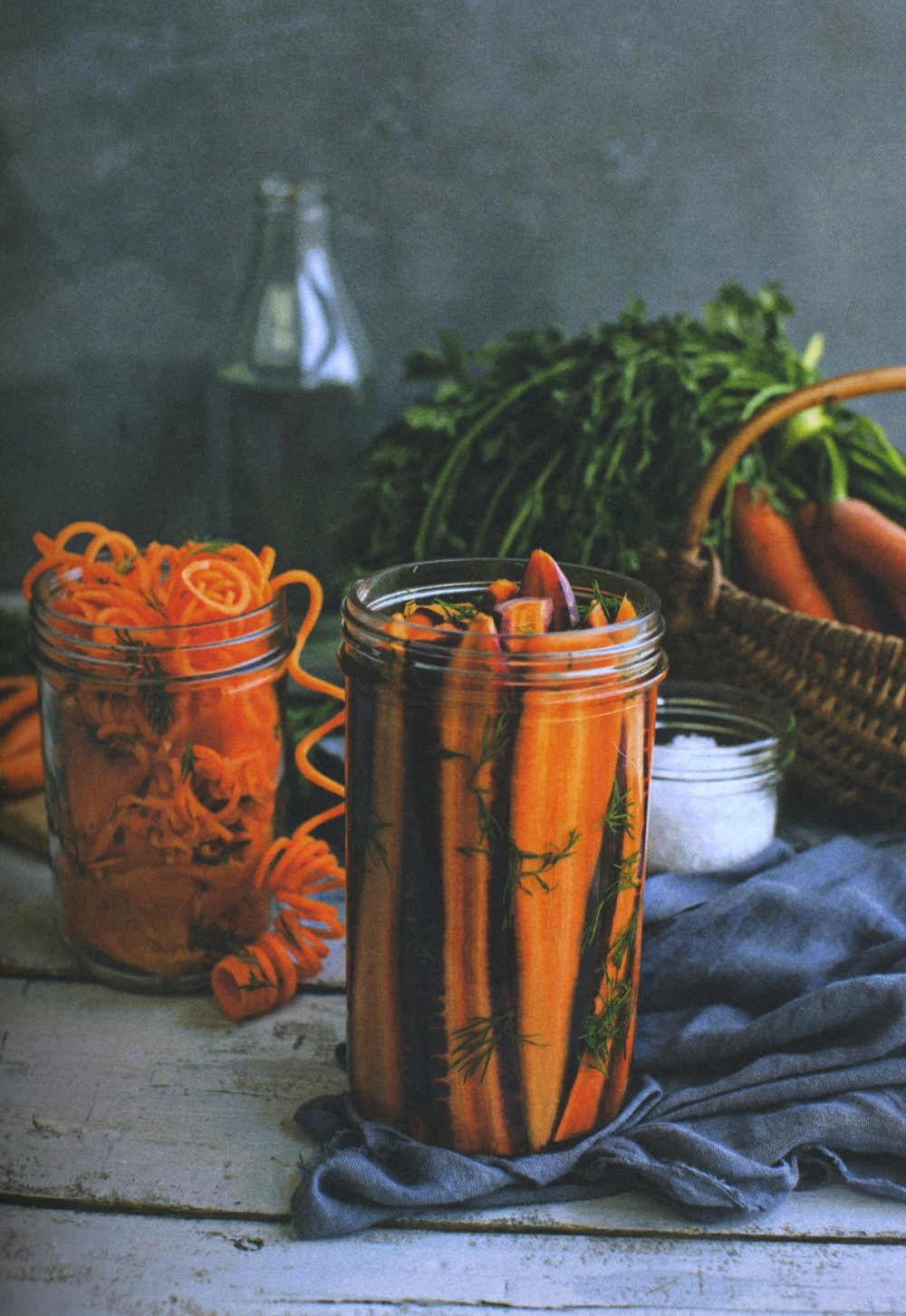
#2 Carrot Sticks
Makes 1x 1-litre jar
6 carrots, unpeeled and cut into sticks
1-2 garlic cloves, smashed
I tbsp chopped fresh dill
2% brine solution (1 tbsp sea salt dissolved in 1 litre filtered water).
Place the carrots, smashed garlic cloves and fresh dill into a clean 1-litre jar. Packing them vertically is the most efficient way to get a tight pack in the jar. Cover with the 2% brine to within 2.5cm of the top of the jar.
Leave to ferment on the countertop for at least two weeks. Taste after this time and continue to ferment until you have achieved your desired flavour. Once you are happy with the taste and texture, you can tuck in.
Store in the fridge for up to six months once opened.
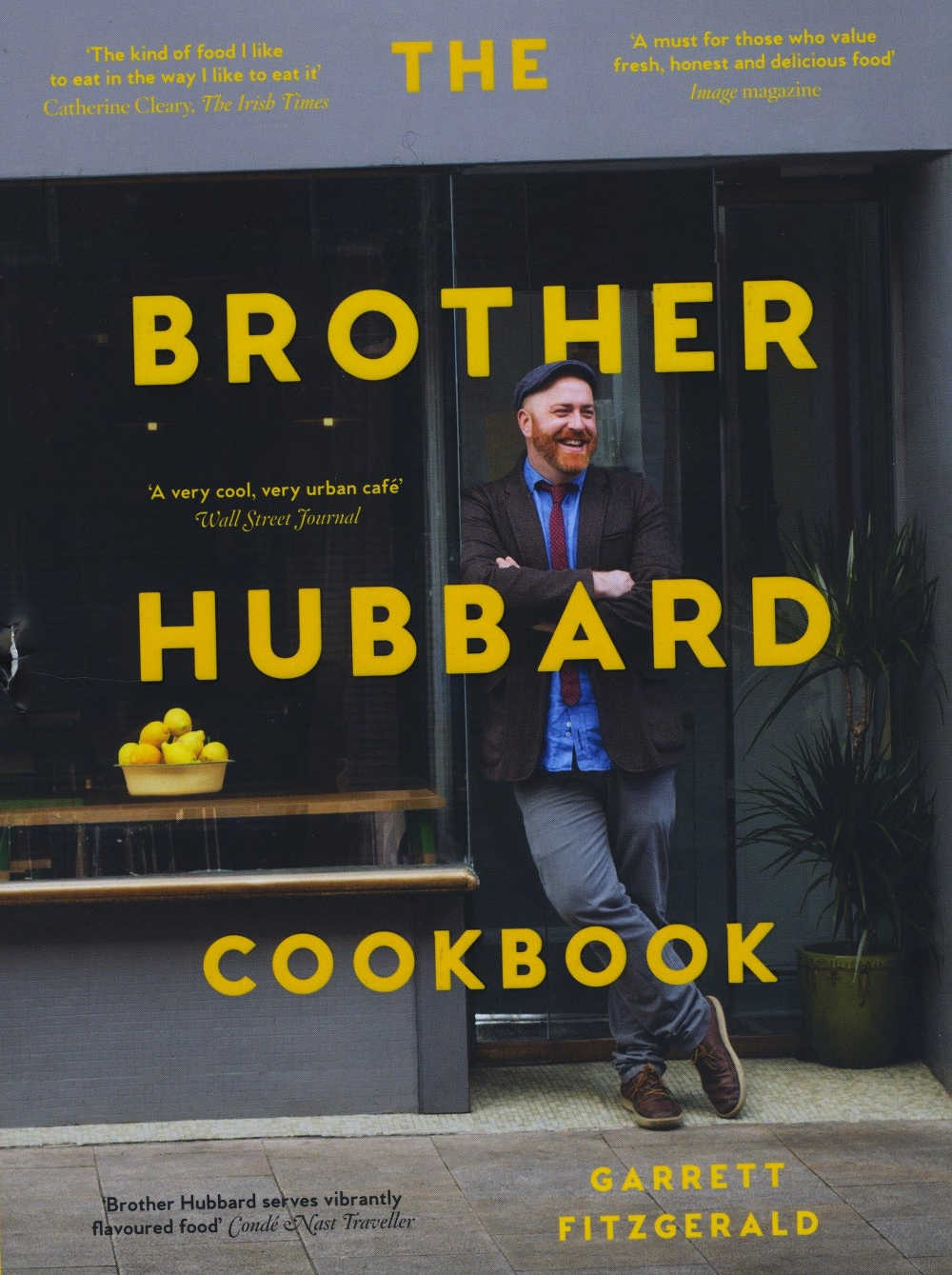
THE BROTHER HUBBARD COOKBOOK by Garrett Fitzgerald; photography by Leo Byrne (Gill Books, hardback; 372pp; €27.99/£24.99.)
A sociable food lovers’ magnet on Capel Street since 2012, the broadly Middle Eastern / Southern Mediterranean restaurant that Ballymaloe Cookery School-trained chef, Garrett Fitzgerald, runs with his partner, James, is already a Dublin institution.
Originally offering an aromatic haven that was like a big hug for recession-beaten Dubliners, it has developed organically to become a daytime café, bakery, and evening restaurant offering ‘fresh pure flavours dedicated to sharing and happiness’ for its community of followers - and an attractive younger sibling, Sister Sadie, has followed in the same tradition south of the Liffey since 2014.
With a welcome emphasis on flavour, colour and texture, this is real food with a nicely balanced combination of good sense and culinary curiosity - delicious and do-able, in short. I also applaud the practicality of details like the multiple page marker ribbons - whoever wants to mark just one recipe?
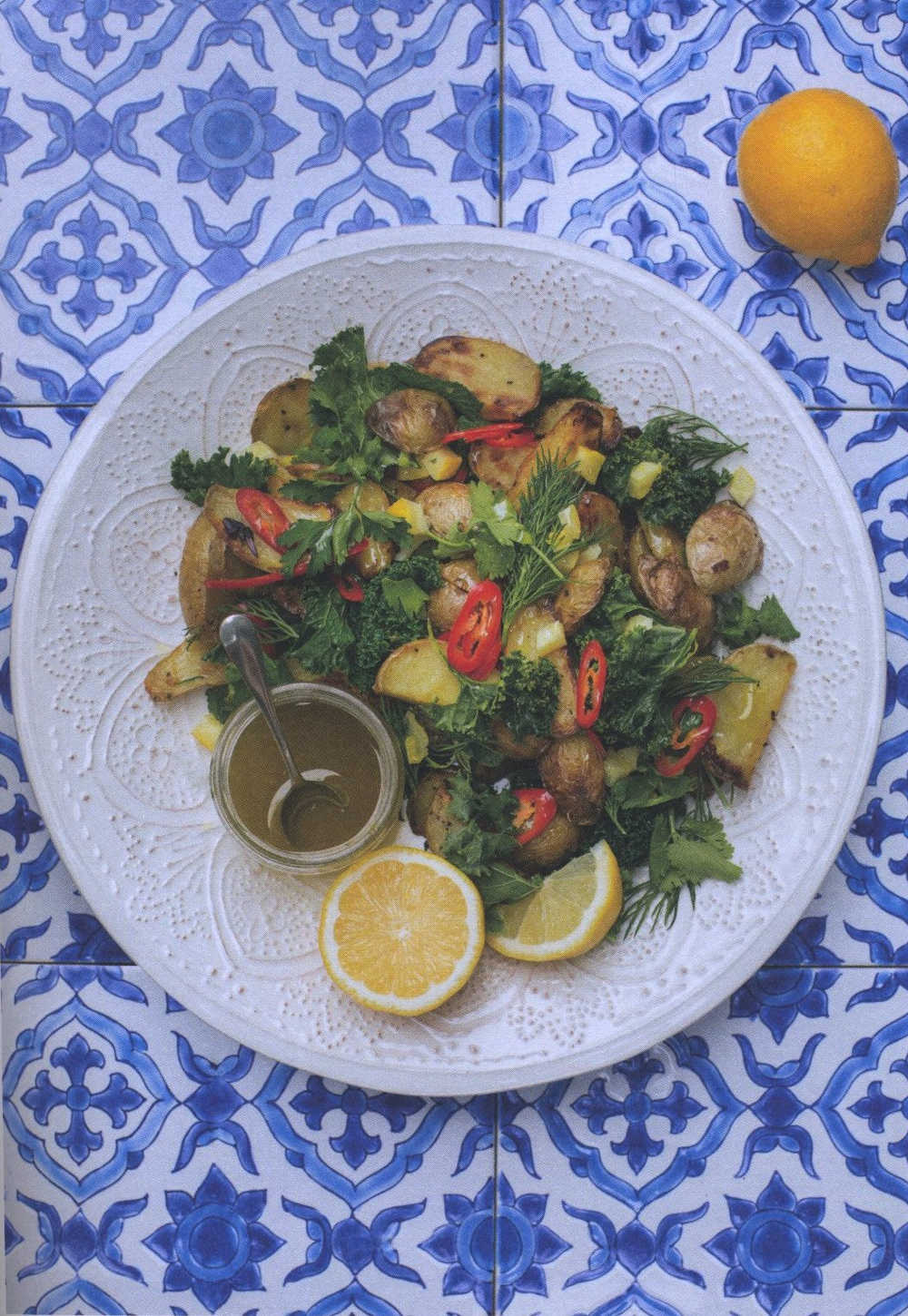
SAMPLE RECIPE: Potato, preserved lemon and kale salad
“Kale has become such a popular ingredient, and rightly so. It's great that its wonders have been rediscovered, but I would like to see the same thing happen to some other overlooked ingredients: pearl barley, caraway seeds and even prunes are on my hit list.
Here we have a salad that is substantial, satisfying, pretty and good for you - everything a salad should be! As per usual, play around with the flavours until it's as you would like it to be.”
Serves 4-6 as a substantial side salad
2 tbsp olive oil
1kg baby potatoes, cut into bite-sized pieces
2 garlic cloves, crushed
1 tsp ground cumin
1 tsp smoked paprika
salt and freshly ground black pepper
200g kale
½ preserved lemon (recipe given for this, or can be shop-bought)
1 red chilli, deseeded and finely diced or thinly sliced into rings
20g mixed fresh herbs (parsley, dill and/or mint), parsley and dill stalks finely chopped and all leaves roughly chopped
juice of ½ lemon.
Preheat the oven to 180°C.
Pour the oil into a large roasting tin and place in the oven to heat through. Place the potatoes in a large bowl, then add the garlic, cumin and smoked paprika along with some seasoning and mix well. Carefully place the well-seasoned potatoes into the hot oiled tin, give it a shake and return to the oven for 25-30 minutes, shaking once midway through. The potatoes are done when they have taken on a nice brown colour and are tender all the way through.
Remove the central rib/stalk from the kale and discard it, then roll up the leaves like a cigar and slice them finely. Remove any of the flesh that's still inside the preserved lemon and discard it, then finely dice the rind.
Place the hot potatoes in a large bowl and toss with the kale, preserved lemon, chilli, mixed herbs, lemon juice, a drizzle of oil and some black pepper and mix well. Taste and season accordingly, adding more garlic, lemon juice, spices or seasoning as you see fit. You can serve this immediately, while it's still warm, but there is also no harm in letting it sit a while so the flavours mingle and the kale softens slightly.
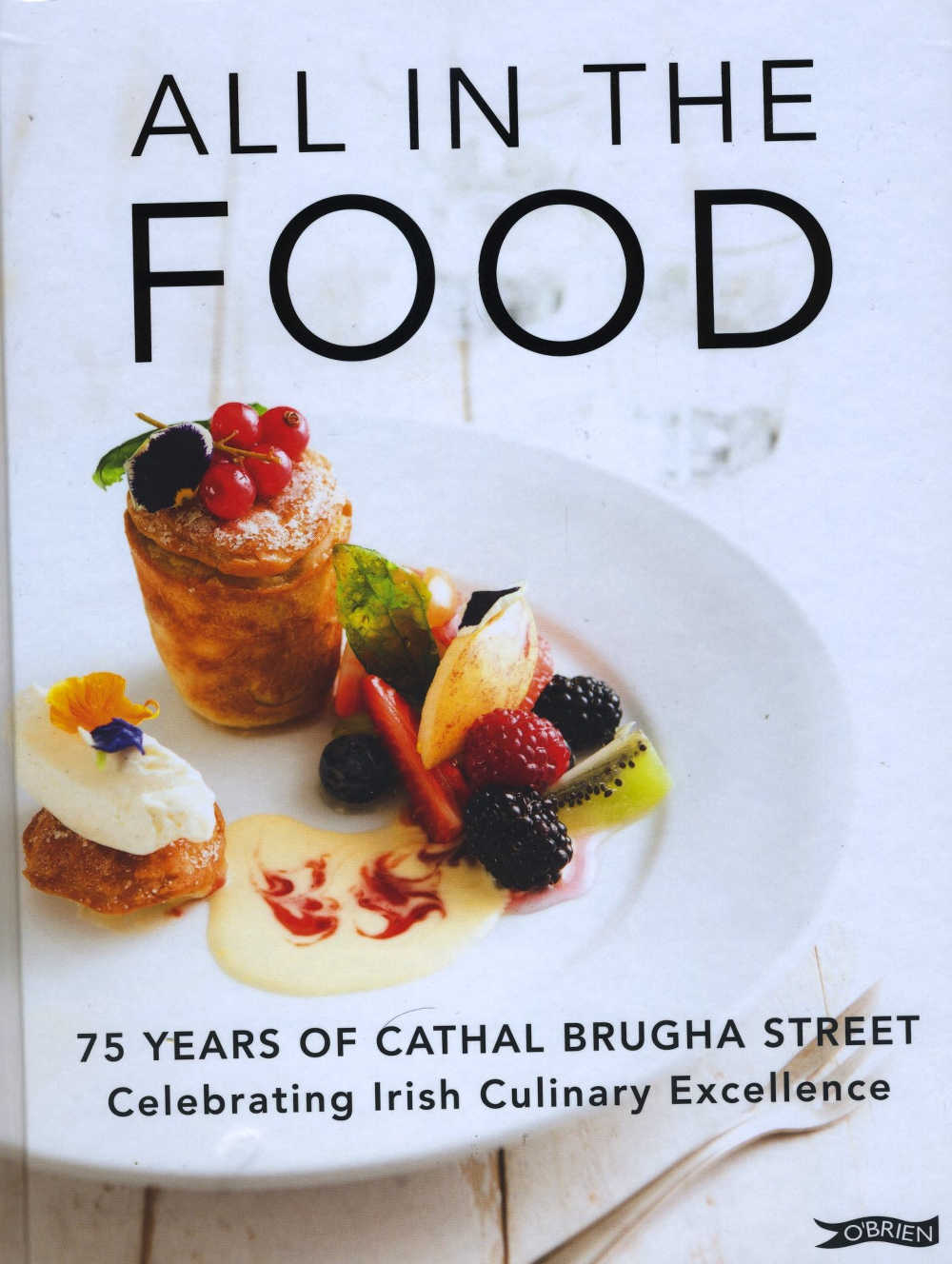
ALL IN THE FOOD - 75 YEARS OF CATHAL BRUGHA STREET, Celebrating Irish Culinary Excellence (O’Brien Press, hardback; 224pp; €24.99/£19.99)
At the other end of the age scale from Brother Hubbard, The School of Culinary Arts and Food Technology - known to all simply as ‘Cathal Brugha Street’, after the place that it has enriched since 1941 - marks its 75th anniversary and celebrates the many achievements of the college and its graduates with this book. Part memoir, part Irish food history, part text book, and part glimpse into what promises to be a bright future, it’s very ‘Cathal Brugha Street’.
And its diverse contents are all built around a backbone of impressive recipes from many famous graduates and associates including Darina Allen, Ross Lewis, Paul Kelly, George Smith, Michael O’Meara, Derry Clarke, Catherine Fulvio, Neven Maguire, and Mark Moriarty among many other luminaries.
Given the nature of the book and the calibre of its professional contributors, the recipes tend to be in the ‘special occasion’ bracket - but there are some simple, wholesome exceptions, including Richard Corrigan’s Scotch Broth (see below), Margaret Connolly’s lovely Nettle Soup, James Griffin’s Seaweed Soda Bread and Pauline Danaher’s Carrot Cake. Everyone who has a connection with Cathal Brugha Street will want to have a copy of this book.
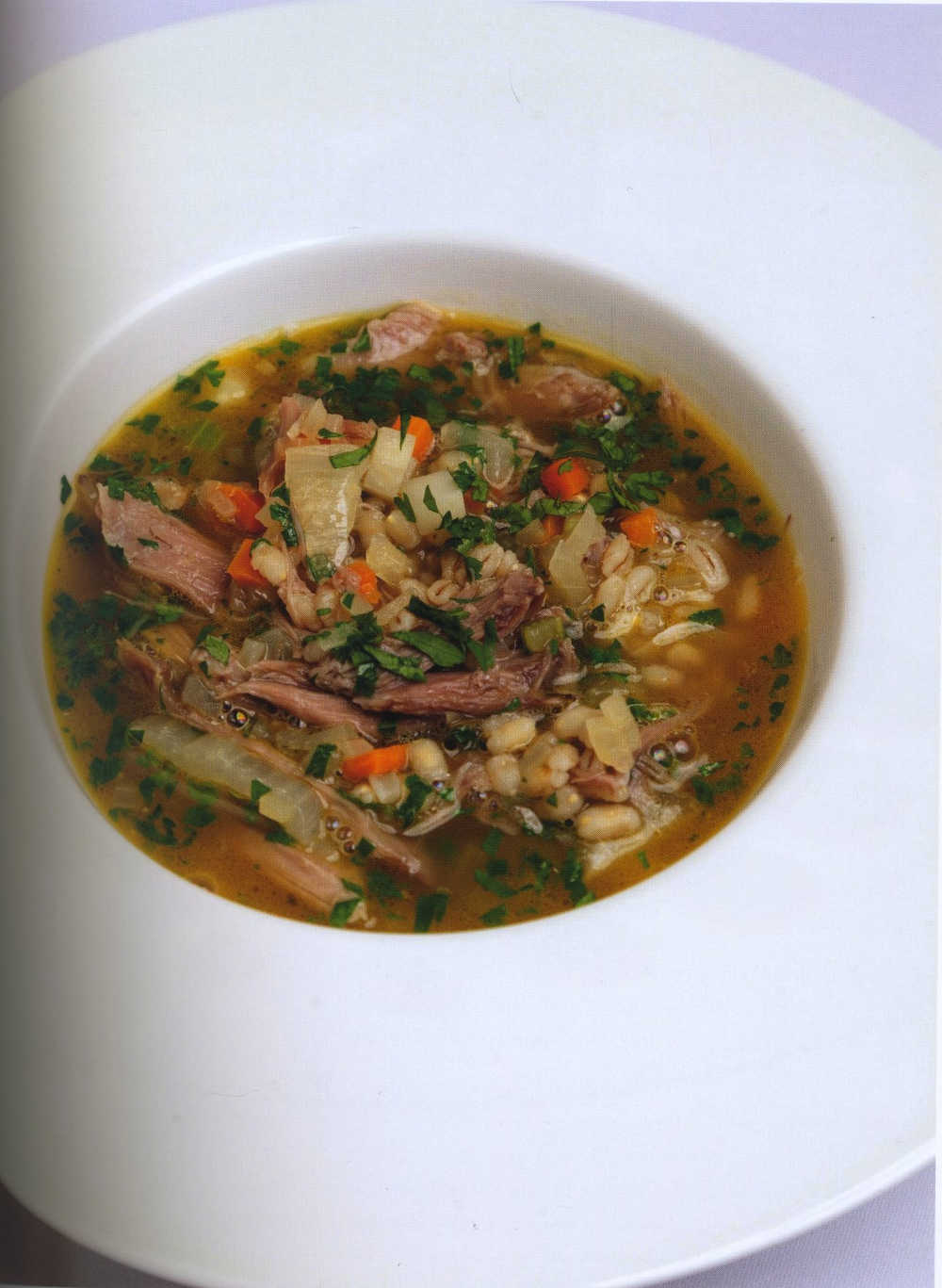
SAMPLE RECIPE: SCOTCH BROTH
This admirably simple recipe - Scotland’s answer to Irish Stew - was contributed by Richard Corrigan, a chef whose combination of finesse and the down to earth is legendary: 'Sometime classic favourites are simply the best. Broth is making a welcome comeback on cold winter days.'
Serves 4
2 lamb necks, on the bone, each weighing 300-400g
50g carrots, diced
50g onion, diced
50g leek, diced
50g celery, diced
50g celeriac, diced
50g turnips, diced
3 garlic cloves, sliced
40g pearl barley
1 bouquet garni
Parsley
200ml olive oil
Salt, pepper
Heat the olive oil in a large, heavy-based pan over a medium heat. Sweat all the vegetables and garlic for 5-10 minutes until soft and lightly golden.
Add the lamb necks, followed by the pearl barley and approximately 2 litres of cold water. Bring to the boil, season with salt and pepper and add the bouquet garni.
Simmer the broth for 2 hours, remove from the heat. Carefully lift the necks out of the pan and flake the meat from the bone. Discard the bones and add the flaked meat back to the broth.
TO SERVE: Reheat the broth, adjust the seasoning to taste and stir in plenty of chopped parsley [Suggested drinks: Chenin Blanc wine or Scotch ale.]
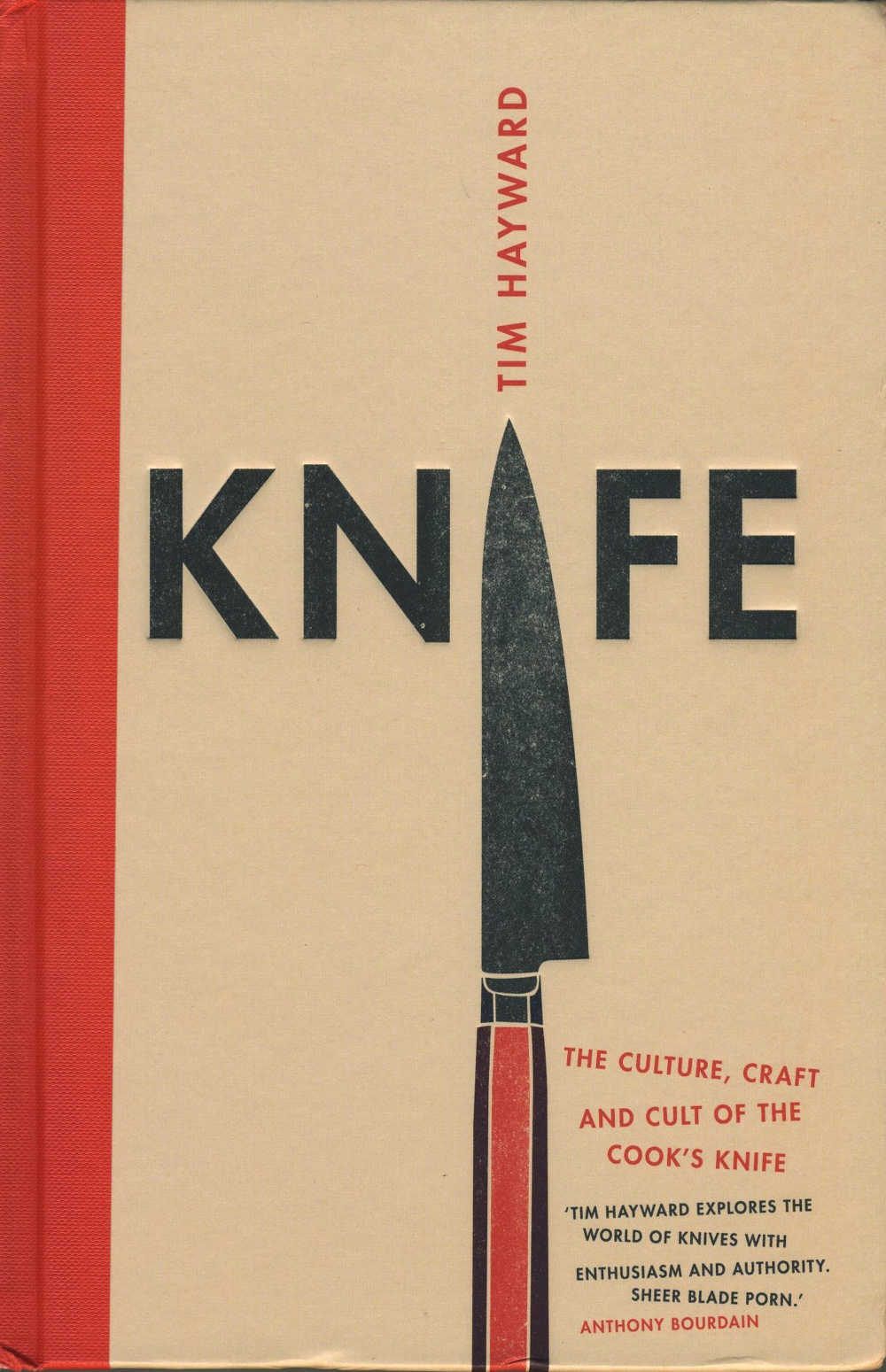 KNIFE, The Culture, Craft and Cult of the Cook’s Knife by Tim Hayward; photographs by Chris Terry (Quadrille, hardback; 224pp; £20.00)
KNIFE, The Culture, Craft and Cult of the Cook’s Knife by Tim Hayward; photographs by Chris Terry (Quadrille, hardback; 224pp; £20.00)
I love this book – it’s refreshing to see something so different from the endless array of quite similar cookbooks that hit the shelves at this time of year and it will make a great gift for anyone with a chef or aspiring chef in the family, or anyone with an interest in food, or culinary history, or civilisation – or just about anything at all.
Forget about all those appliances that clutter up the countertop, we all know that a good knife is all we really need - along with a good chopping board of course, a topic also touched on here. Tim Hayward - proprietor of the 90-year old Cambridge bakery and restaurant, Fitzbillies - was the 2015 Guild of Food Writers’ Food Writer of the Year and is well known for his print journalism and contributions to thinking persons’ radio programmes like The Kitchen Cabinet and The Food Programme.
Just the man to write ‘a love letter to he most treasured of culinary tools’. Get it and pore over Chris Terry’s loving photo portraits of every conceivable kind of knife from the slightly rusty carbon steel classic beloved of Elizabeth David to Chinese cleavers, picnic knives and Japanese mandolins, and get lost in the illuminating and very readable text.
There’s everything you never knew you wanted to know about knives here, from their history and cultural significance, to how they’re made, how they feel - and how we feel about them. Practical stuff too - on sharpening, and the 10 Rules of Carving, for example - and you’ll be interested to see what Tim has to say about the electric carving knife too. A magic book.
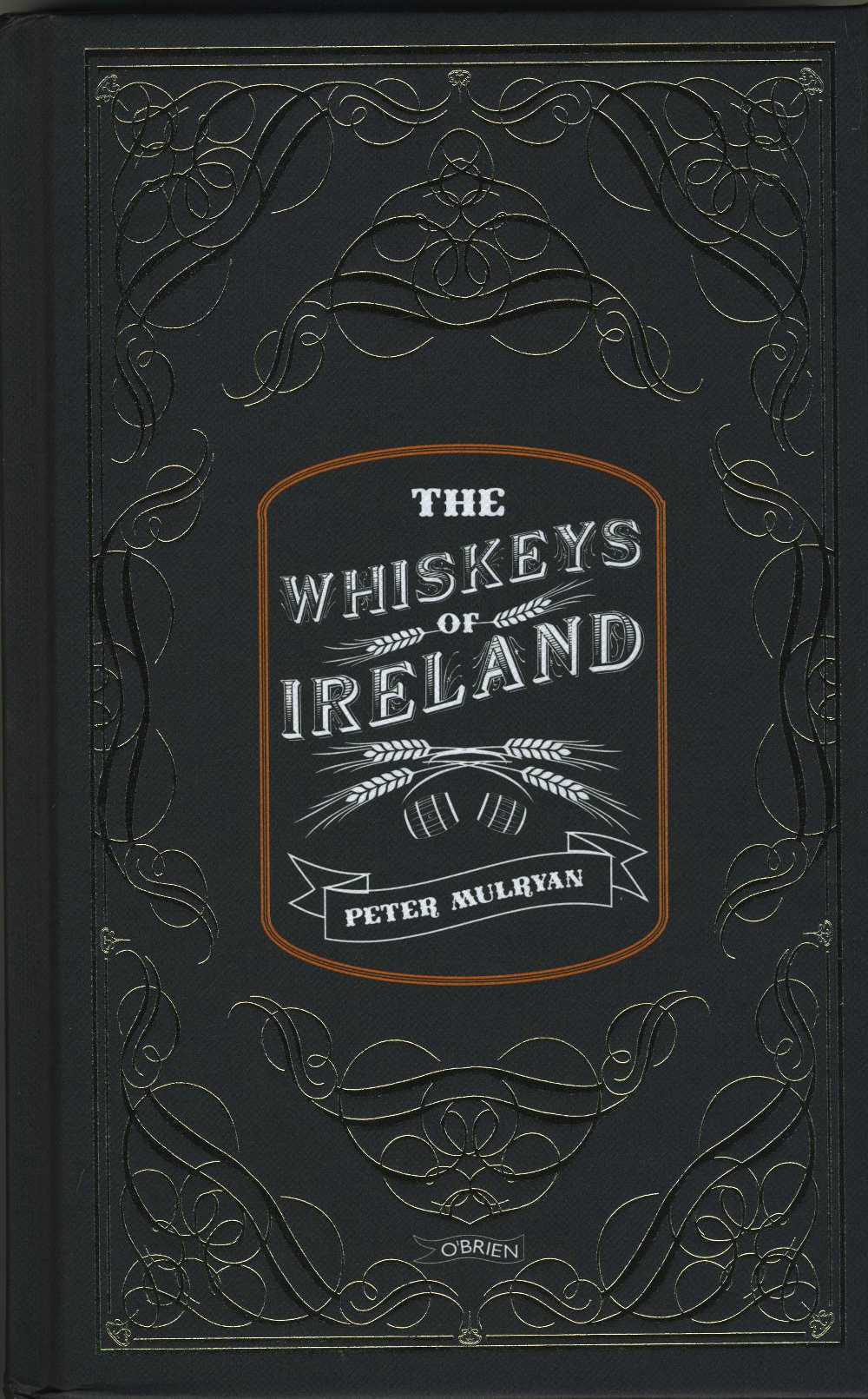
The Whiskeys of Ireland by Peter Mulryan. (O’Brien Press, hardback;192pp; €19.199/£14.99)
The author of multiple books on Irish whiskey, former radio and TV producer Peter Mulryan - now owner of Blackwater Distillery, West Waterford - is an established expert in the field and this is an updated version of the 2002 edition.
How things have changed since then. Whether or not you are a whiskey drinker, this book is sure to be as enjoyable as it is fascinating, for it’s a rollicking good read (as they used to say) that moves along at a cracking pace and tells us as much about Ireland and our relationship with the world as it does about whiskey.
Tracked from way back in ‘the mists of time’, through its rise - eventually to meteoric heights in the late 19th century following the arrival of phylloxera in Europe and consequent wipe out of French brandy - and fall, largely due to over-production and dropping standards, the history of Irish whiskey is nothing if not exciting, a roller coaster ride of successes and near disasters.
This is a terrific book with one small caveat - there is no Index. This is especially missed in the later sections which deal with the renaissance of craft distilling, a miracle that first began in a small way at Longueville House, Co Cork, in the early 1990s when the late Michael O’Callaghan started making apple brandy, although it was well over a decade later before larger scale operations began to start up.
This is a fascinating - and unfinished - part of the story, and one to which we can all relate. I wonder how many readers will be struck by the irony that, in 19th century Ireland, an almost tasteless high-alcohol distillation called ‘silent spirit’ (because it lacked the natural flavours of pot still whiskey) was made in huge volume in ‘column’ stills that - unlike pot stills - could operate 24/7. As well as being used here for the production of inferior spirits (and industrial use), it was exported.
Today, a similar product is imported, and is the base for many of the fashionable new gins - of which only a handful, including Peter Mulryan’s excellent Blackwater Gin, are all-Irish products. Plus ca change.
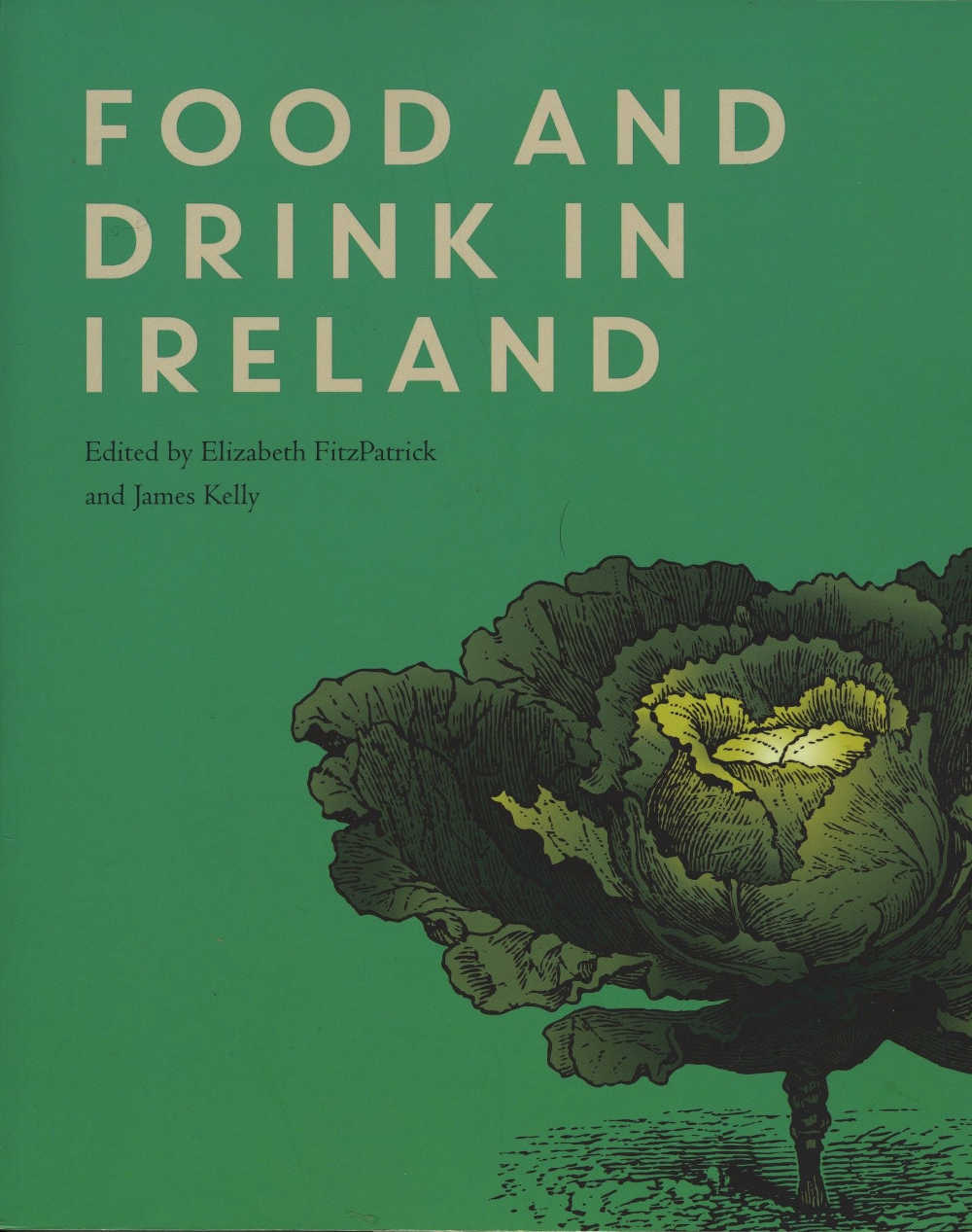
FOOD AND DRINK IN IRELAND, Edited by Elizabeth FitzPatrick and James Kelly (Royal Irish Academy; paperback; 430pp; €25 from ria.ie)
If you, or a friend or relative on your Christmas list, has an academic interest in Irish food and drink, then this is the book for you. As pointed out by the publishers, the Royal Irish Academy, “Although subjects of enduring interest in their own right, food and drink are still more revealing archaeologically and historically when they amplify and illuminate broader societal behaviours and trends.”
Beginning in very early times, with the first settlers, this impressive book presents a holistic view of ‘the collection, cultivation, consumption and culture of food and drink in Ireland’ through essays by a team of fourteen contributors who are all leading experts in their fields.
Highlights include Regina Sexton’s essay on Food and culinary cultures in pre-Famine Ireland; Diarmaid Ferriter on Drink and society in twentieth century Ireland; Máirtín Mac Con Iomaire on haute cuisine restaurants in nineteenth and twentieth century Ireland; and Frank Armstrong’s essay Beef with potatoes, on food, agriculture and sustainability in modern Ireland.
Whether for serious research, or to dip into with curiosity and pleasure from time to time, this is an extraordinary and thought provoking book - and excellent value too.





There are currently no comments
Leave a comment
Not a member? Register for your free membership now!
Or leave a comment by logging in with: